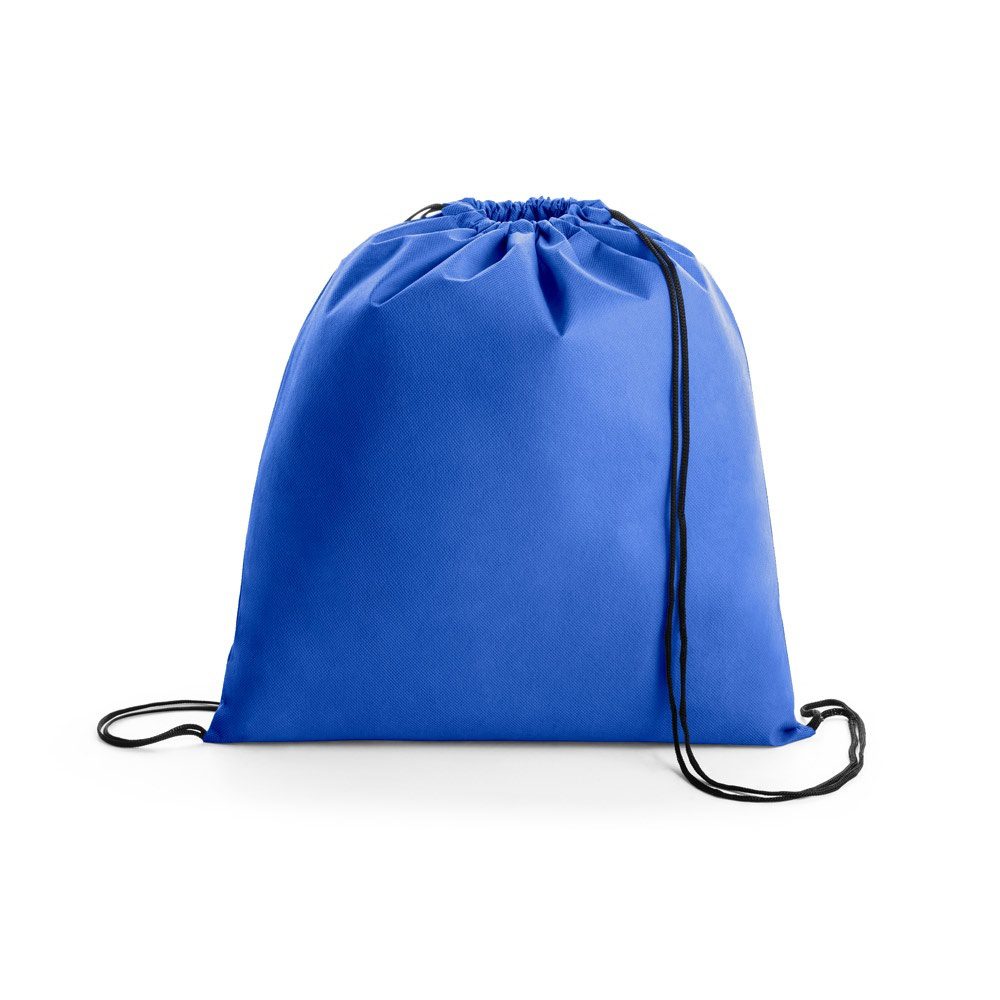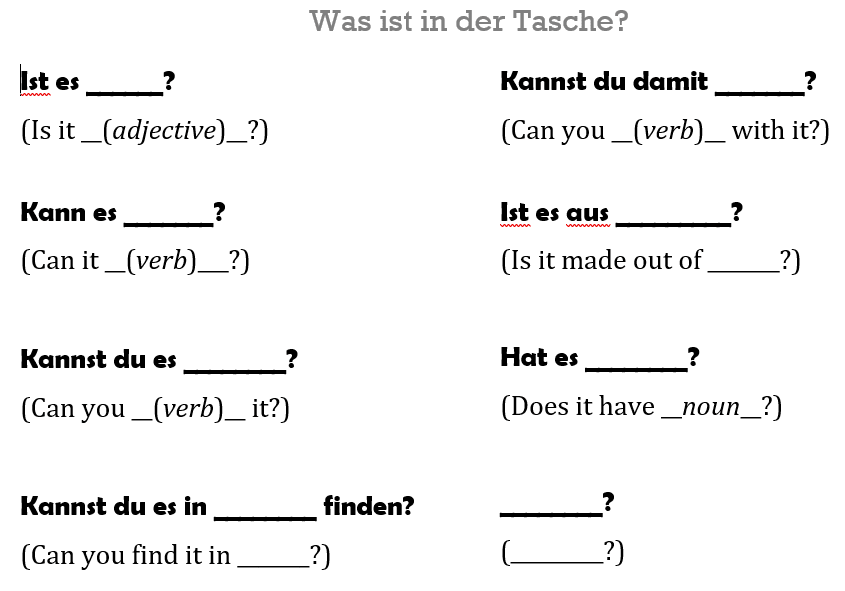What’s in the Bag?

What’s in the Bag?
This an simple, low prep activity that students really enjoy. It is similar to 20 questions, but you can vary it to help keep it feeling new for students. (Find that link below!) Here is the basic set up:
1. Put an object in a bag. (It can be a representation of an object also, e.g. a toy elephant.)
2. The class asks “yes” or “no” questions to figure out what is in the bag and you respond appropriately.
- Note: When I respond, I generally restate the question and then answer with a full-response, e.g.:
- The class asks: “Is it square?”
- I respond: “Is it square? (Pause) No, it is not square.”
This is a simple and quick way for the students to get repetition with the structures and vocabulary.
- Note: In some cases, when you use a representative object, you have to answer as if it is the real object. (Be sure to clarify this for students!) For example, if I put a small plastic elephant in the bag, I answer as if I am talking about a real elephant.
- The class asks: “Is it big?”
- I respond: “Is it big? (Pause) Yes, it is big.”
- The class asks: “Is it bigger than a car?”
- I respond: “Is it bigger than a car? (Pause) Yes, it is bigger than a car.”
3. After a set number of questions or time interval (e.g., 20 questions or 10 minutes), the class agrees on what object they think is in the bag and then the class gives you their final guess.
- Note: Throughout the whole process, you are going back and repeating / recycling the questions. That is, generally after a few questions from the class, I stop and ask the class: “What questions have we asked already? / What do we know?” We then go back over the questions and answers, before we move on.
- Tip: After a certain amount of questions, you do not need to go all the way back to the first question. Just review the previous few questions. For example, after the 13th question, don’t have to go back to the beginning (unless you want to!) You can just go back and review the 10th-13th questions before moving on.
4. After their guess, you show them the object.
- Note: Depending on time and engagement with the class, after revealing the object, you can go back and review all the questions. This can be a good time to retrace how the class got to their answer. (However, it is not necessary.)
Here are the structures for the questions that my students can ask:
- Note: They may ask different questions, but they must be “yes” or “no” questions.

- Important: Sometimes a the answer is not a simple “yes” or “no”. But that is okay. It is a good time to work in vocabulary, such as: “normally“, “often“, “can be“, etc. For example,
- The class asks: “Is it blue?”
- I respond: “Is it blue? (Pause) It can be blue, but it does not have to be blue. It can be other colors also.”
For variations of this activity, click here:
https://eric-richards.com/variations-to-whats-in-the-bag/
Reflections:
My students really enjoy this activity; they always ask if they can play it. (We generally play “Was ist in der Tasche? – What’s in the bag?” on Fridays. It is a fun way to end the week.) I generally do this activity with my upper-level classes. I find it runs smoother, when the class has a broader vocabulary base.
With that said, I do allow students to look up words as needed. (Low-frequency words can up in this activity.) Despite some of the vocabulary being lower-frequency words, I find that the vocabulary sticks. Not only is the class getting a lot of reps with it during the activity, they also tend to reuse / recycle the vocabulary the next time we do this activity. Plus, it helps that they are not focused exclusively on the language, but rather they are using the language to solve a problem – namely, finding out what is in the bag.
I also find that “What’s in the bag?” is a good way to expand elements of a language, e.g., adjectives, verbs, etc. By nature of the questions, students use many different descriptive words and action words. (See questions structures above!)
I hope this helps and I hope you and your students enjoy it! Please let me know how it goes in the comment section below!
Mach’s gut!